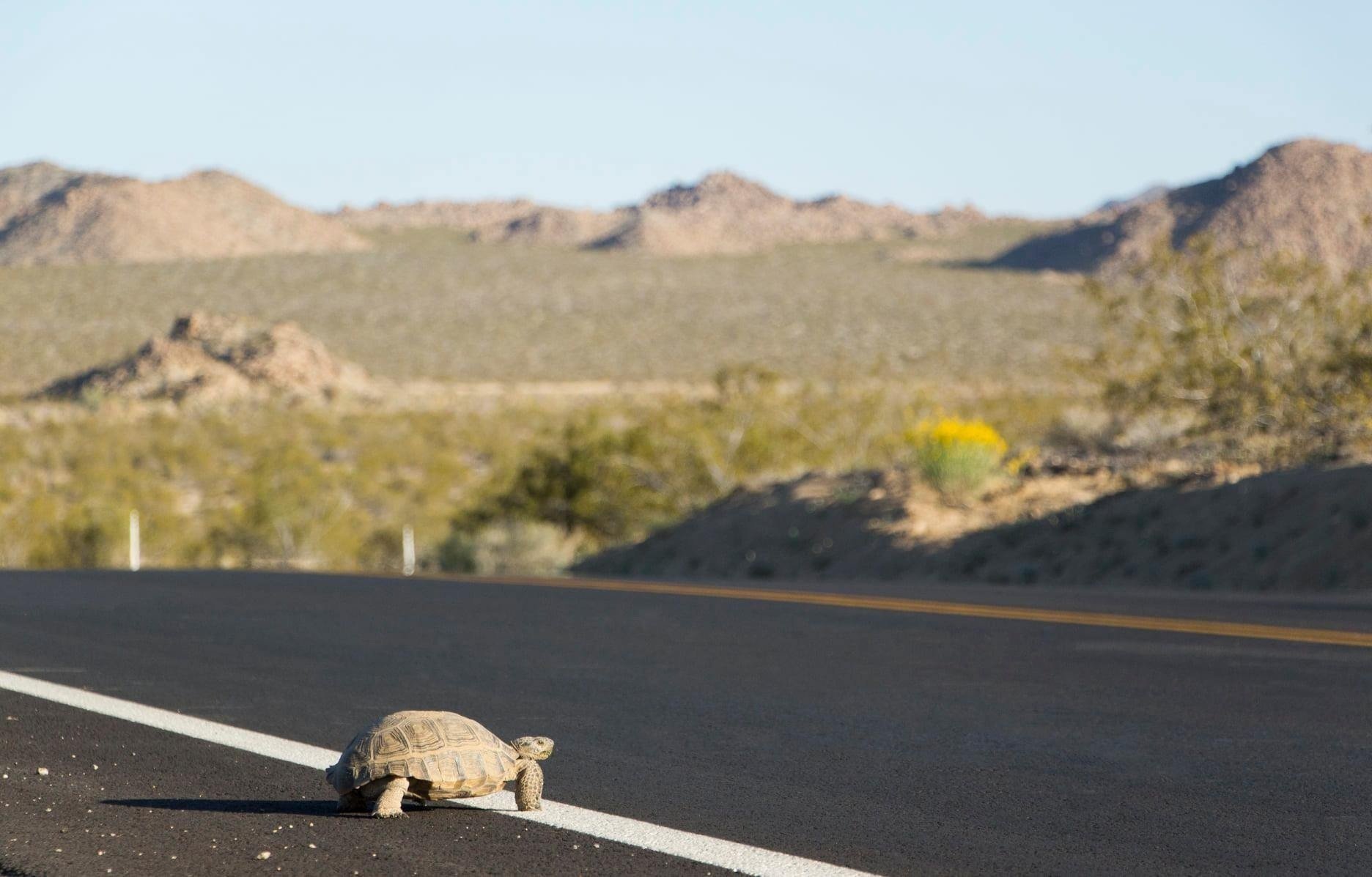California Bill Aims to Improve Wildlife Connectivity, Public Safety
Assemblymembers Friedman, Kalra Introduce Legislation to Reduce Wildlife-Vehicle Collisions
SACRAMENTO, Calif.— Assemblymembers Laura Friedman (D-Glendale) and Ash Kalra (D-San Jose) introduced a bill on Wednesday that would prioritize crossings and other infrastructure projects that improve wildlife connectivity and make California roads safer.
The Safe Roads and Wildlife Protection Act would require Caltrans to identify barriers to wildlife movement before planning and designing transportation projects. Caltrans would also need to implement at least 10 projects per year that improve wildlife connectivity.
A desert tortoise crossing a road. Photo: Brad Sutton/NPS
Habitat for the state’s most iconic species, including mountain lions, desert tortoises and California tiger salamanders, has been fragmented by roads, freeways and development. This fragmentation has led to inbreeding and genetic isolation for many sensitive species. Assembly Bill 2344 would prioritize effective wildlife crossings so animals can roam and find mates.
“P-22 is no match for your Prius on the 101,” said Friedman. “We know the toll that wildlife and vehicle collisions take every year, and yet we keep repeating the same mistakes when it comes to building infrastructure. A.B. 2344 shifts the focus at Caltrans to more inclusive design that can save the lives of people and wildlife.”
Wildlife crossings in the form of overpasses, underpasses, culverts and other roadway features can make travel safer for motorists. More than 44,000 wildlife-vehicle collisions were reported on California roads from 2016 to 2020, resulting in human deaths, injuries and property damages, according to the UC Davis Road Ecology Center.
These reported collisions have resulted in damages totaling at least $1 billion in that timeframe. Estimated costs could be as high as $2 billion when considering unreported collisions that are documented in insurance claims.
“Roads that are dangerous for drivers can also be deadly for wildlife,” said Tiffany Yap, D.Env/Ph.D., a senior scientist at the Center for Biological Diversity. “If lawmakers make it a priority to put wildlife crossings in the state’s most problematic hot spots, that’ll make a huge difference in protecting imperiled species. This bill could help save mountain lions and San Joaquin kit foxes from local extinction.”
The Safe Roads and Wildlife Protection Act builds on legislation enacted last year that encourages coordination between Caltrans and the California Department of Fish and Wildlife to implement wildlife crossings. Senate Bill 790, signed into law by Gov. Gavin Newsom, clarified the application of mitigation credits to wildlife connectivity projects.
The new bill introduced by Friedman and Kalra takes it a step further by requiring Caltrans to plan and build projects every year to facilitate wildlife movement and enhance public safety. The projects, which can be a freeway overpass or directional fencing at an existing underpass, would be prioritized in coordination with state wildlife officials. The bill would also establish a protocol for state agencies to gather roadkill data and identify areas where wildlife passages are most needed.
“Giving our mountain lions, bears and other wildlife an opportunity to safely cross our roads has repeatedly been shown to be a cost-effective solution to reduce collisions with wildlife and connected habitats,” said Wildlands Network California Program Manager Mari Galloway.
###
Contacts
Mari Galloway, Wildlands Network, (209) 373-9973, mari@wildlandsnetwork.org
Tiffany Yap, Center for Biological Diversity, (510) 847-5838, tyap@biologicaldiversity.org
About
Since 1991, Wildlands Network has been reconnecting, restoring, and rewilding North America so that life in all of its diversity can thrive.
The Center for Biological Diversity is a national, nonprofit conservation organization with more than 1.7 million members and online activists dedicated to the protection of endangered species and wild places.


